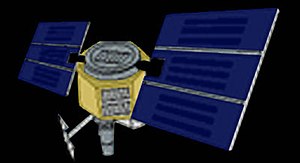 Explorer 60 (SAGE) satellite | |
| Names | Explorer 60 AEM-B Applications Explorer Mission-B |
|---|---|
| Mission type | Earth science |
| Operator | NASA |
| COSPAR ID | 1979-013A |
| SATCAT no. | 11270 |
| Mission duration | 1 year (planned) 3 years (achieved) |
| Spacecraft properties | |
| Spacecraft | Explorer LX |
| Spacecraft type | Stratospheric Aerosol and Gas Experiment |
| Bus | SAGE |
| Manufacturer | Langley Research Center |
| Launch mass | 148.7 kg (328 lb) |
| Power | Solar panels and batteries |
| Start of mission | |
| Launch date | 18 February 1979, 16:18 UTC[1] |
| Rocket | Scout D-1 (S-202C) |
| Launch site | Wallops, LA-3A |
| Contractor | Vought |
| Entered service | 18 February 1979 |
| End of mission | |
| Last contact | 7 January 1982 |
| Decay date | 11 April 1989 |
| Orbital parameters | |
| Reference system | Geocentric orbit[2] |
| Regime | Low Earth orbit |
| Perigee altitude | 547.5 km (340.2 mi) |
| Apogee altitude | 660.2 km (410.2 mi) |
| Inclination | 54.90° |
| Period | 96.80 minutes |
| Instruments | |
| Stratospheric Aerosol and Gas Experiment (SAGE) | |
Explorer 60, also called SAGE (Stratospheric Aerosol and Gas Experiment) and was the second of the Applications Explorer Missions (AEM), AEM-B (Applications Explorer Mission-B), was a NASA scientific satellite launched on 18 February 1979, from Wallops Flight Facility (WFF) by a Scout D-1 launch vehicle.[3]
- ^ "Launch Log". Jonathan's Space Report. 21 July 2021. Retrieved 22 November 2021.
- ^ "Trajectory: Explorer 60 (SAGE) 1979-013A". NASA. 28 October 2021. Retrieved 22 November 2021.
 This article incorporates text from this source, which is in the public domain.
This article incorporates text from this source, which is in the public domain.
- ^ Cite error: The named reference
Displaywas invoked but never defined (see the help page).